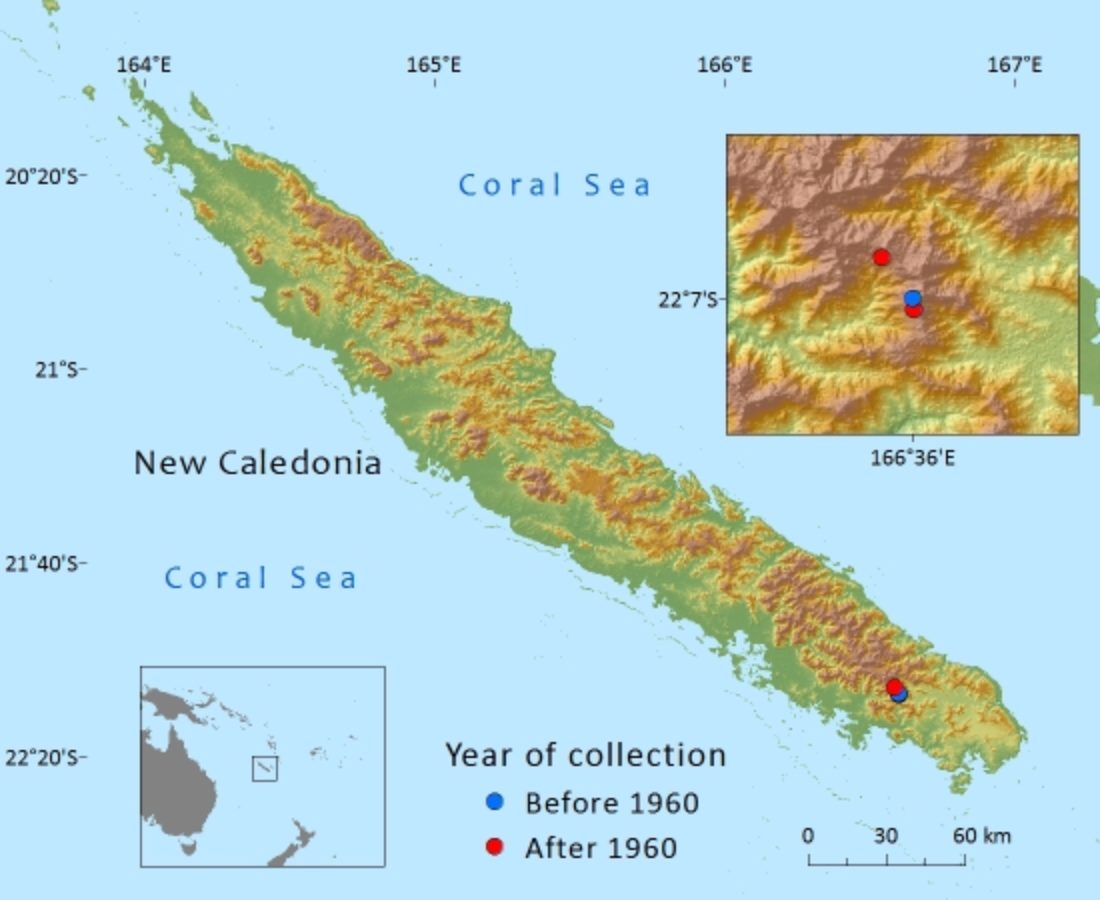Podocarpaceae
Podocarpus decumbens
Endemic to New Caledonia where it is only known from three small sites in the south of Grand Terre. Its main threat is from fire
Description
Habit
Decumbent or prostrate shrub, sometimes semi-erect, to ca 40cm. Bark exfoliating with fibrous strips, outer bark yellowish brown.
Foliage
Leaves in tufts borne towards ends of branches, oblanceolate to linear, 4.5–8 x 0.6–0.9cm, leathery, gradually tapering to a pertiole at base, margins revolute, apex narrowing abruptly, obtuse or almost acute. Midrib prominent on upper side, flattened on lower side, light green.
Cones
Male pollen-cones axillary, solitary, sessile, subtended by triangular, keeled bud-scales, 15–30 x 3–3.5mm. Female seed-cones axillary, solitary on a 5–7mm long peduncle; receptacles swelling 8–10cm long, red and succulent, subtended by two 3–4mm long bracts which are made up of 3–4 fused bracts with exserted tips, one being fertile. Seeds solitary 6–7 x ca 4mm Including epimatium)
References and further reading
- de Laubenfels, D.J. (1972). Flore de la Nouvelle-Caledonie et Dependances. (4). Gymnospermes. Paris: Museum National d'Histoire Narurelle. 167 pp.
- Jaffré, T., Munzinger, J. & Lowry, P. P. (2010). Threats to the conifer species found on New Caledonia's ultramafic massifs and proposals for urgently needed measures to improve their protection. Biodiversity and Conservation: 19(5):1485-1502.
- Gray, N.E. (1955). A Taxonomic revision of Podocarpus IX. The south Pacific Species of Section Eupodocarpus, Subsection F. Journal of the Arnold Arboretum 36:199-206.
- Thomas, P. (2010). Podocarpus decumbens. In: IUCN 2012. IUCN Red List of Threatened Species. Version 2012.1. . Downloaded on 27 September 2012.
